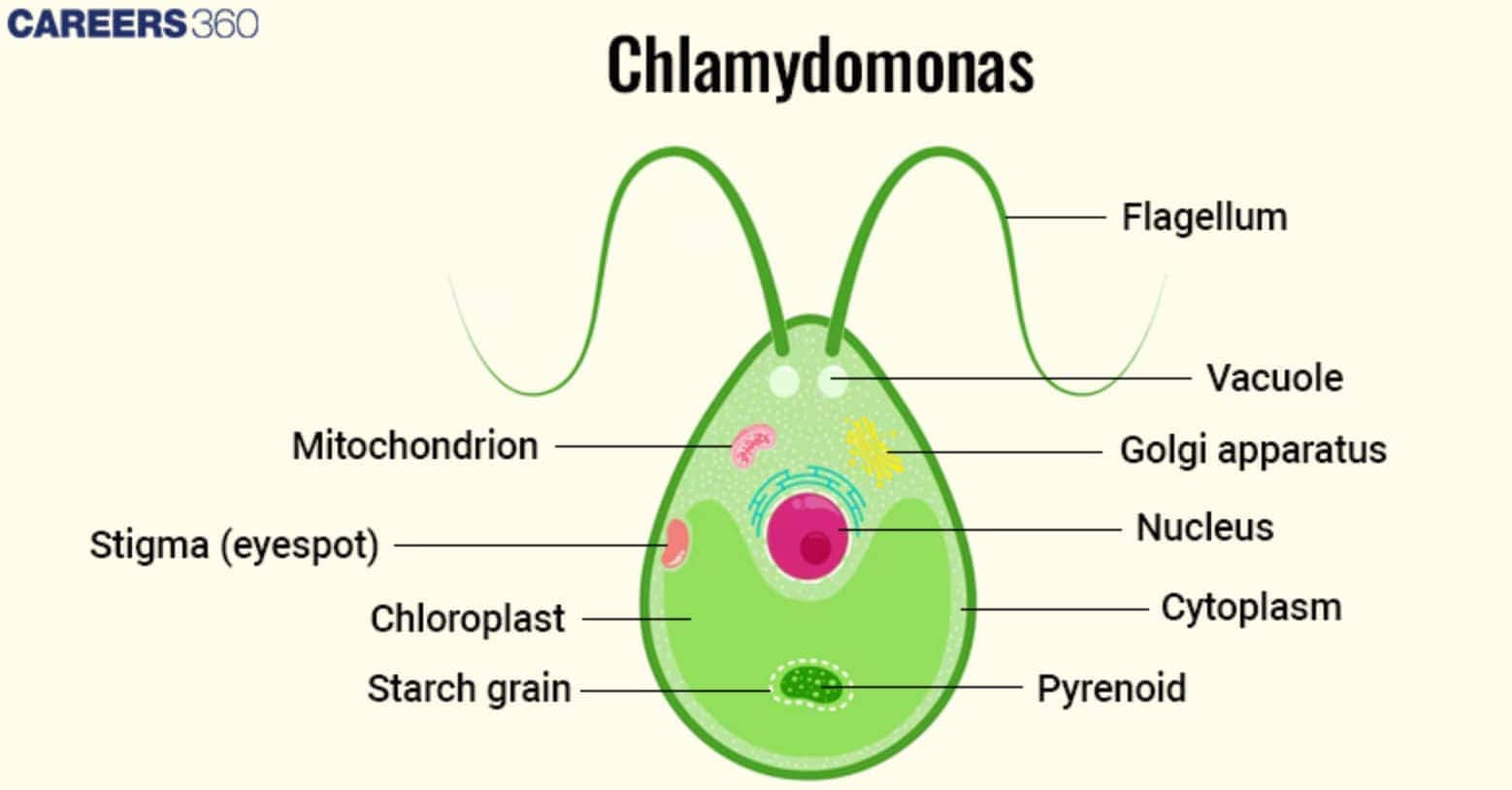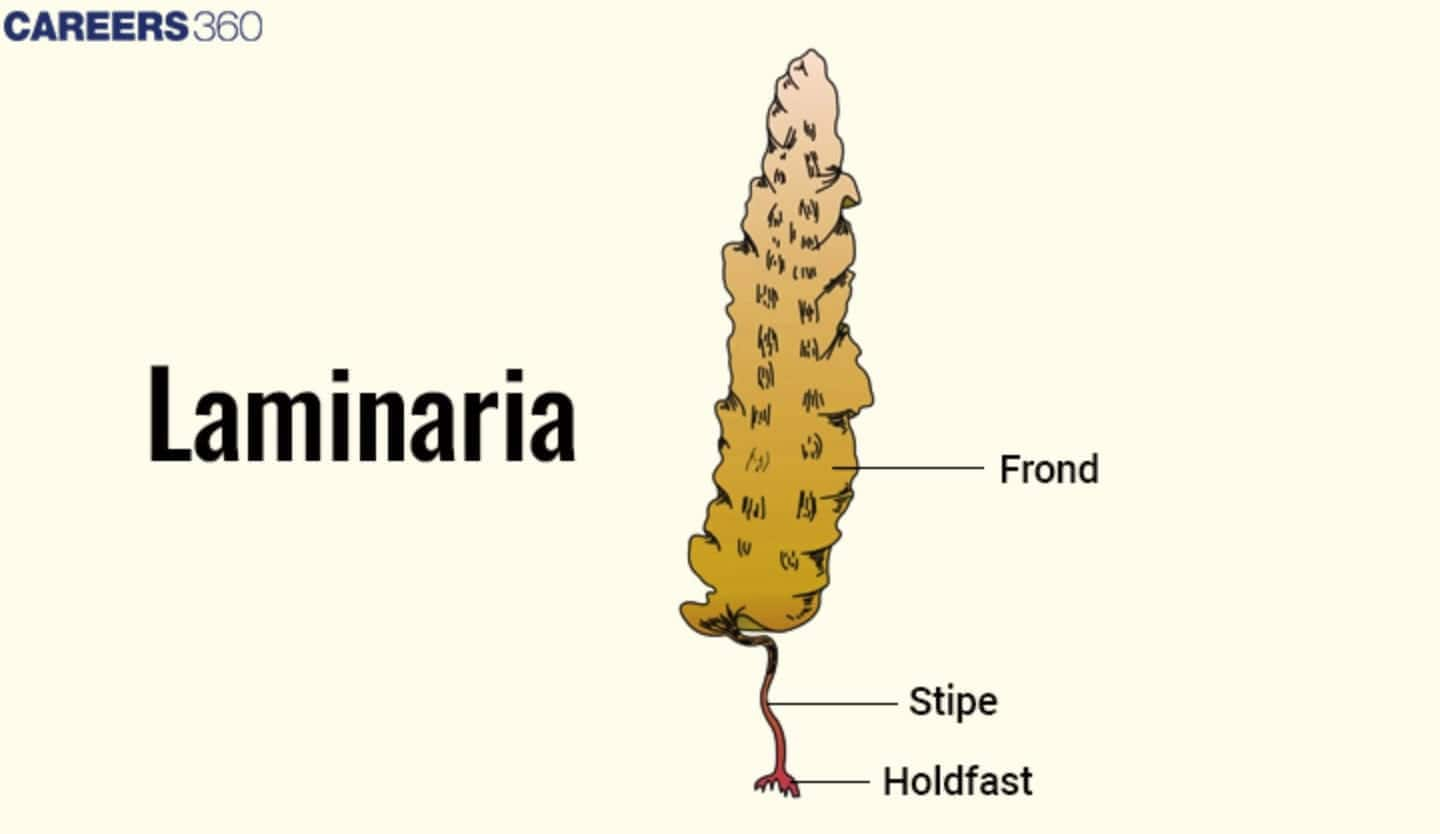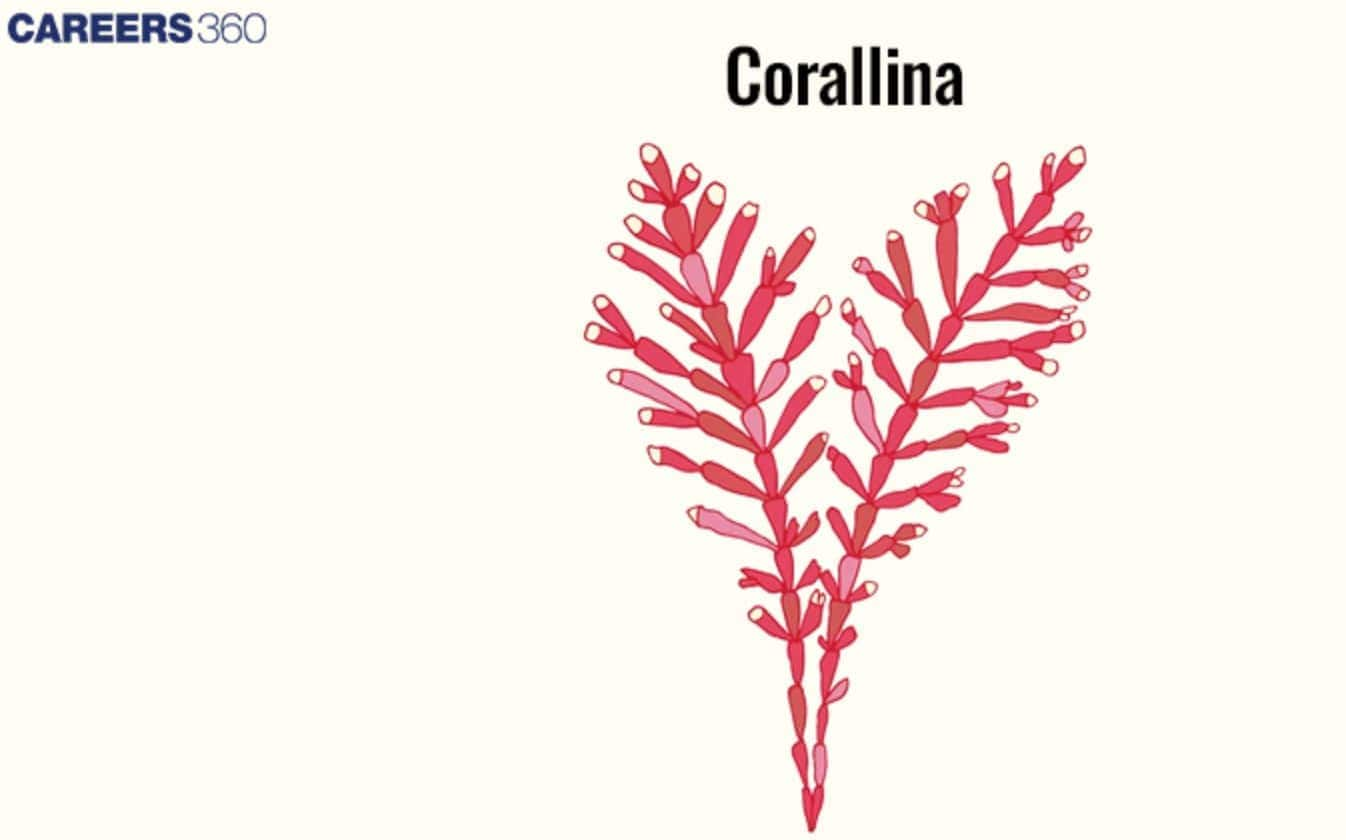Algae - Types & Examples, Defination
Algae are simple autotrophic organisms that live mostly in aquatic habitats like freshwater lakes, rivers and oceans. They can be tiny and single-celled or large like seaweeds. These organisms play an important role in the aquatic ecosystem by producing oxygen and serving as a food resource for many aquatic animals. The basic definition of algae is that they are plant-like organisms capable of photosynthesis, but lack true roots, stems and leaves.
This Story also Contains
- What is Algae?
- General Characteristics of Algae
- Classification of Algae
- Algal Biofuel
- Recommended Video on Algae
.jpg)
This topic explores the different types of algae, including green, red and brown algae, with helpful diagrams and examples to understand them better. It also highlights the uses of algae, especially their growing importance in areas like biofuel. Understanding algae helps in studying their role in nature and how to benefit both the ecosystem and humans. Algae are a topic of the Plant kingdom in biology.
What is Algae?
Algae represent a simple, autotrophic organism capable of generating energy from the light provided by sunlight through a process called photosynthesis. It may be unicellular or multicellular; it can pertain to any taxonomic group. Besides their existence in different kinds of environments, algae also play an essential role in providing oxygen to our planet.
General Characteristics of Algae
Some general characteristics of algae are:
Algae are chlorophyllous and photosynthetic in nature.
They are found in a wide variety of habitats. Some may be exclusively freshwater, while others can be perfectly saltwater species.
Algae reproduce both sexually and asexually, although the latter method is their main mode of reproduction.
The structure of algae is unicellular and possesses a simple structure; at times, even its thallus is filamentous or sheet-like, while at times it is branched.
Algae exhibit different colours because of the occurrence of the various pigments present, which are green, brown, or red algae.
Also Read:
Classification of Algae
The classification of the types of algae is outlined as follows:
Chlorophyta (Green Algae)
Range from basic organisms such as Chlamydomonas to complex forms.
They contain chloroplasts, which store energy, and include chlorophylls A and B.
Cellulose is commonly used to make cell walls.
Found in moist terrestrial habitats (such as soils and rocks) and freshwater.
Example
Volvox
Chlamydomonas
Spirogyra
Ulva (sea lettuce)

Phaeophyta (Brown Algae)
Fucoxanthin is a pigment that gives large, multicellular brown algae seaweeds their brown or olive colour.
Prevalent in cool coastal environments, particularly on coastal rocks and kelp beds with a high concentration of nutrients.
Examples
Sargassum
Fucus (Rockweed)
Laminaria (Kelp)

Rhodophyta (Red Algae)
Rhodophyta comprises multicellular algae predominantly found in marine habitats, characterized by their red to purplish colour due to phycoerythrin pigment.
Red algae thrive in various marine environments, forming large beds or reefs.
Examples
Gelidium
Porphyra (Nori)
Corallina

Blue-Green Algae (Cyanobacteria)
Blue-green algae, also known as cyanobacteria, are a group of photosynthetic algae that can exist as single cells or form multicellular colonies.
They are characterised by their blue-green colouration, which is primarily due to the presence of chlorophyll a and the pigment phycocyanin.
Blue-green algae are versatile and can be found in a variety of aquatic environments, including freshwater lakes, ponds, rivers, and marine ecosystems.
Examples
Anabaena
Microcystis
Nostoc
Other Types of Algae
Some other types of algae are:
Diatoms
Diatoms are unicellular algae encased in silica walls (frustule), exhibiting diverse shapes like cylindrical and star-like forms. They are essential for converting carbon dioxide into oxygen.
Found in both freshwater and marine environments, diatoms dominate nutrient-rich areas and form an important part of the aquatic food chain.
Examples
Navicula
Diatomaceous Earth
Dinoflagellates
Dinoflagellates are unicellular algae possessing two flagella, allowing them to swim. They can be autotrophic, photosynthetic, or heterotrophic.
These algae are prevalent in both marine and freshwater environments and can cause harmful algal blooms.
Examples:
Symbiodinium
Gonyaulax
Karenia brevis

Algae examples
Some notable examples of algae include:
Chlorella: A unicellular green alga known for its high nutritional value.
Spirulina: A cyanobacterium that is often consumed as a health supplement.
Nori: A red alga used in sushi.
Algal Biofuel
Another use of algae is to produce biofuel. Lipids produced by the cultivation of algae can be transformed into biofuel. This strategy is a significant topic in research on renewable energy since it offers a sustainable substitute for fossil fuels. Algal biofuel has great potential because, in comparison to conventional crops, algae can develop quickly and effectively, yielding large amounts of biofuel per acre.
Also Read:
Recommended Video on Algae
Frequently Asked Questions (FAQs)
Algae are a diverse group of mostly aquatic, photosynthetic organisms that lack the true roots, stems, and leaves of plants. They are typically found in water and are capable of producing oxygen through photosynthesis. Algae include various types like seaweeds, diatoms, and phytoplankton, and they can be single-celled or multicelled.
Algae are essentially phototrophic organisms that convert sunlight into energy with the help of chlorophyll. They can be either microscopic-sized phytoplankton or large seaweeds. Major characteristics of algae include:
- Photosynthesis: These are chlorophyll-containing organisms and thus capable of doing photosynthesis to produce oxygen and organic matter.
- Habitat: Most algae are aquatic, though some of them are freshwater, and a few of them can exist in moist soils or surfaces.
- Structure: Algae are unicellular like diatoms or multicellular like kelp and lack the characteristic tissues found on higher plants.
- Reproduction: These reproduce asexually, either by fragmentation, spores, or through binary fission; some of them also reproduce sexually.
- Tyes: Algae can vary in colour from blue-green, brown, and red depending on the type of pigments contained.
Examples: Laminaria, Chlamydomonas.
- Food: Some of these algae - like spirulina and nori - can be eaten raw, while others are used as dietary supplements.
- Animal Feed: Algae is a nutrient supplement to the diet in aquaculture and it is also provided as animals' livestock feed.
- Fertilizers: Organic fertilizer prepared from algal biomass can help raise the fertility of the soil.
- Biofuels: Biodiesel and bioethanol could be produced by processing algae. End.
- Pharmaceutical: Algae are used as sources for a variety of bioactive compounds to produce medicines like antioxidants and anti-inflammatory drugs.
- Cosmetics: Algal extracts have found application in most cosmetics and skin care products due to their moisturizing and soothing nature to the skin.
- Water Treatment: Algae are applied in bioremediation; that is, they adsorb pollutants and purify water.
- Industrial Products: Algae could be applied to produce biodegradable plastics and other sustainable products.
- Biotechnology: Algae are used in research and biotechnology for genetic engineering and as model organisms.
- Nutritional Supplements: Algal supplements, including spirulina and chlorella, are sold as nutritional or health-promoting agents with vitamins, minerals, and protein content.
- Production of Oxygen: The majority of the world's oxygen is produced through photosynthesis by algae.
- Source of Food: They are important to the aquatic food web because, in most marine organisms, they happen to be the basic food element, such as fish and zooplankton.
- Habitat: Many freshwater organisms live in algae and consequently add to the biodiversity of their ecosystem.
- Nutrient cycling: Their roles are important in the aquatic environment; they help recycle carbon, nitrogen, and phosphorus.
- Biotechnology Applications: Algae find their uses in the production of biofuels, pharmaceuticals, and bioremediation.
Questions related to
On Question asked by student community
Hello reader,
Chlorella and Spirulina are algae used as food supplements by space travellers. Especially they are used because,
- They both are rich source of proteins, vitamins and minerals
- They are small and easy to cultivate
- Chlorella produces oxygen which is helpful in space
- Chlorella also recycles carbon dixode
Due to all this reasons, these algae are used by astronauts as food supplements.
I hope, this answers your query.
Correct Answer: CADB
Solution : The correct choice is the third option.
The logical flow of information is:
- The paragraph illustrates the concept of omnivores and their dietary adaptability. It begins (C) by defining omnivores as animals capable of thriving on both plant and animal substances.
- Following this, (A) details how omnivores obtain energy and nutrients by digesting various components from both plant and animal sources. This showcases their ability to derive sustenance from a wide range of food types.
- Then, (D) elaborates on the adaptability of omnivores by highlighting their capacity to include diverse food sources like algae, fungus, and bacteria in their diet, underscoring their flexibility in consumption.
- Finally, (B) concludes the paragraph by indicating that the diverse range of animals classified as omnivores can further be divided into sub-categories based on their specific dietary habits, emphasising the wide spectrum of dietary behaviours within the omnivore classification.
Therefore, the correct order is CADB.
Correct Answer: Hematology : Blood
Solution : Given:
Phycology : Algae (Here, Phycology is the scientific study of algae.)
First option: Eccrinology : Amphibians; Eccrinology is the branch of medical science concerned with secretions of the eccrine glands.
Second option: Selenography : Secretions; Selenography is the study of the moon's surface.
Third option: Hematology : Blood; Hematology is the study of blood and blood disorders.
Fourth option: Entomology : Soil; Entomology is the scientific study of insects.
So, only the third option follows the same pattern as followed by the given pair of words. Hence, the third option is correct.